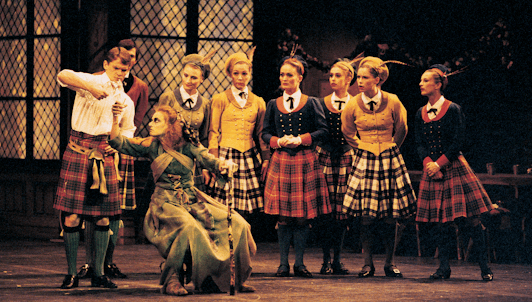An overview of the Bournonville method through two legendary ballets of the Danish choreographer: The Sylph in its 1936 choreography and the "Pas de deux" extract from The Flower Festival in Genzano composed in 1858: two pearls of the repertoire!
Just before the dawn, a Scottish farmer, James, is slumbering. He is waiting for his wedding with the young Effie. He is suddenly awaken by the loving kiss of a sweet winged creature, a Sylph, who has appeared in front of him. Could it be a dream? James attempts to catch her but the Sylph disappears when Effie arrives to prepare the wedding. Among the cortege, a fortune teller appears and tells Effie the secret dream of her fiance, but James is the only one who can see the Sylph. Suddenly, the Sylph appears again and steals the ring of James's fiancee. James decides to follow the Sylph into the woods to catch her...
The Sylph, is the ultimate romantic ballet, for which original choreography had been written by Filippo Taglioni in 1832; and which libretto gave the leading role to her own daughter - the virtuoso ballerina Marie Taglioni. Adapted choreography was written by August Bournonville in 1836. Lucette Aldous and Flemming Flindt develop the ballet like a dream with lot of grace and lightness.
Bournonville choreographed more than fifty ballets, but the "Pas de deux", extract from The Flower Festival in Genzano, is one of his most accomplished choreographies to a backdrop of a love duet. Through the lightness of the steps and repeated jumps, Bournonville develops a complex set of techniques. The result is sublime and is now a reference in ballet. It is highlighted by the brilliant Rudolf Nureev performing Paolo and the charming Merle Park performing Rosa.
These captivating archives filmed in 1961 for the BBC (La Sylphide) and then in 1974 (Flower Festival in Genzano) remarkably highlight "Bournonville's style." Indeed, the art of the dancers reveals the greater prominence given to male dancers, for instance with James's solo in the second part of La Sylphide, beating his legs together in the air, a process named batterie in classical dance.

